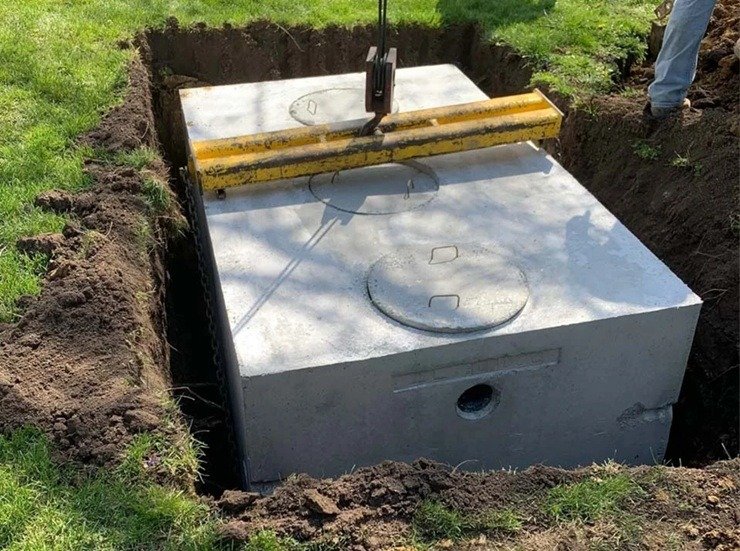Lifestyle
Why Understanding Your Home’s Wastewater System Matters

Why Your Wastewater System Deserves Attention
Most homeowners rarely think about what happens once water disappears down the drain, but the system buried beneath the yard does far more than people realize. A strong underground water management setup protects the home, the soil, and everyday comfort. For properties without municipal sewer access, a dependable on-site wastewater system becomes essential for keeping everything running smoothly.
Your plumbing carries wastewater into a tank where solids settle, bacteria break down waste, and clarified water flows to the drain field. The soil then naturally filters water before it returns to the environment. Understanding these basics helps homeowners make smarter decisions about care, upgrades, and long-term planning.
Modern households often use more water than previous generations. Larger families, more appliances, and increasing daily usage place constant pressure on these systems. With a well-designed setup, including durable septic tanks New Hampshire homeowners rely on, a property can maintain dependable performance for decades.
How Septic Tanks Work Below the Surface
A septic tank has a simple but essential job. It receives wastewater from the home, separates solids, and begins the natural treatment process. High-quality tanks built for colder climates provide strong, long-lasting performance and resist soil pressure, temperature shifts, and moisture changes. A well-built tank helps prevent leaks and supports the entire wastewater system.
Choosing septic tanks New Hampshire experts install ensures compatibility with local soil conditions, seasonal weather patterns, and regional environmental standards. When properly sized and installed, the system remains stable and predictable throughout the year.
Many homeowners underestimate how much the tank handles daily. Every shower, laundry cycle, and dishwashing session depends on it. A durable, well-maintained tank works quietly in the background to keep the home clean and functional.
The Drain Field: The Home’s Natural Filtration System
After initial treatment in the tank, the drain field takes over. This section of the yard allows pre-treated water to seep into the soil, where natural filtration removes contaminants before the water cycles back into the ground. A properly designed drain field prevents pooling, surfacing, or odor issues.
Protecting this area is simple. Homeowners should avoid driving or parking heavy vehicles on it, keep deep-rooted trees away, and redirect gutters so stormwater does not flood the field. These habits help protect its structure and extend its lifespan.
Drain field performance is directly influenced by what enters the tank. Thoughtful water use and proper disposal habits reduce the risk of clogs, soil saturation, or unnecessary repairs.
Common Mistakes Homeowners Should Avoid
Even the strongest systems struggle when daily habits work against them. Pouring grease down the sink, flushing wipes, or using excessive harsh chemicals disrupts natural processes and can create blockages. These materials often cause long-term damage inside the tank.
Using too much water at once can overwhelm the system as well. Running several large appliances at the same time or ignoring leaks adds unnecessary stress. Spacing out laundry loads and fixing minor plumbing issues helps keep everything balanced.
Routine pumping also matters. Solids slowly accumulate, and if they’re not removed, they can travel into the drain field and cause permanent damage. Staying on schedule is one of the most effective ways to protect the entire system.
Seasonal Factors Every Homeowner Should Monitor
Cold climates add extra pressure to wastewater systems. Freezing temperatures can affect water flow, and heavy snow can hide warning signs. Knowing where system components are located helps keep lids and risers accessible year-round. Allowing grass to grow longer in the fall can provide natural insulation.
Rain and snowmelt also influence performance. Saturated soil absorbs water slowly, which can strain the drain field. During long wet periods, reducing non-essential water use helps prevent backups or stress on the system.
Local wastewater professionals understand seasonal challenges and can recommend designs that work best for each property.
When to Consider Upgrading Your System
Older systems may not match today’s household demands. Tanks that are undersized, worn out, or made from outdated materials can struggle to keep up. Upgrading offers stronger construction, better filtration, and modern components like risers and effluent filters.
Renovations, additions, or appliance upgrades often increase water usage. Improving system capacity or treatment quality keeps everything running smoothly and protects the home’s long-term value.
Working with experienced professionals ensures upgrades fit both the property and local regulations.
Simple Maintenance Habits That Make a Big Difference
Protecting your wastewater system doesn’t require expert training. Regular pumping, mindful disposal practices, and efficient water use can dramatically extend the system’s lifespan. Avoid flushing anything other than wastewater and toilet paper, and limit heavy chemical cleaners that disrupt natural bacteria.
It also helps to recognize early signs of trouble. Slow drains, gurgling noises, wet spots near the drain field, or persistent odors often signal an issue that needs attention. Addressing problems early prevents serious damage.
Routine inspections and seasonal checkups from local service providers keep the system functioning properly for years to come.
-

 Quotes3 years ago
Quotes3 years ago53 Motivational Gym Quotes to Fuel Your Workout
-

 Quotes10 years ago
Quotes10 years ago50 Most Powerful Quotes Ever Spoken
-

 Motivation5 years ago
Motivation5 years ago4 Fun New Hobbies To Try This Year
-

 Quotes2 years ago
Quotes2 years ago43 Inspirational Quotes About Thoughts
-

 Quotes12 months ago
Quotes12 months ago100 Motivational Quotes to Inspire You in 2025
-

 Quotes3 years ago
Quotes3 years ago105 Motivational Quotes by Famous People
-

 Quotes1 year ago
Quotes1 year ago77 Morning Motivational Quotes to Kickstart Your Day
-

 Education11 months ago
Education11 months agoHow to Motivate Yourself to Study: 6 Proven Techniques































